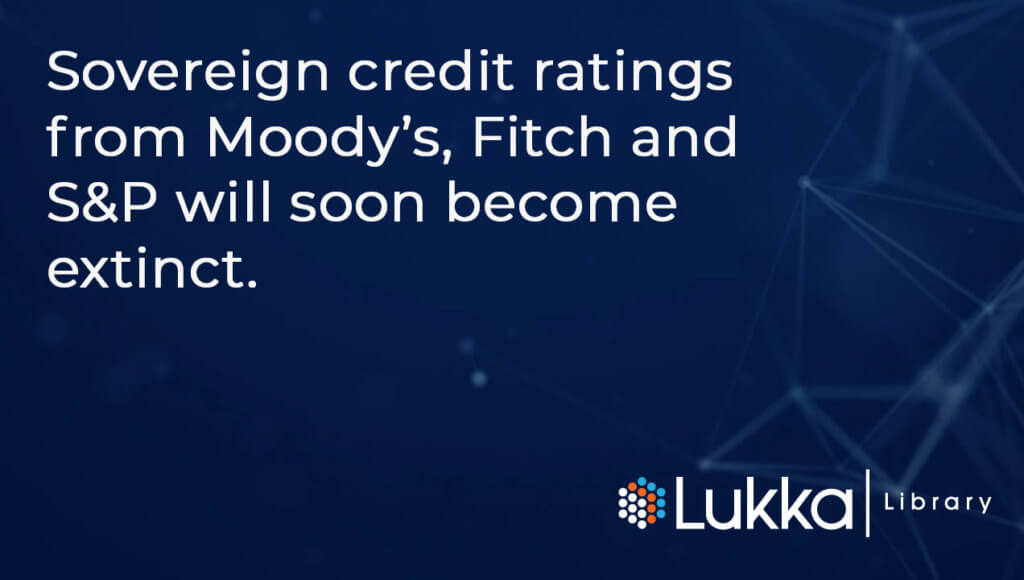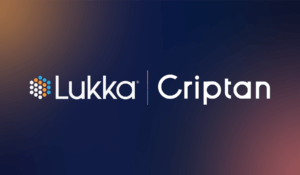Just like the food pyramid, sovereign national credit ratings are useless. A bunch of scientists figured out that in fact it’s more important to know the actual ingredients in what you’re eating. That’s why we now have nutrition facts.
Unfortunately, though, it’s 2015 and our entire financial system is still making some of its decisions based on sovereign credit ratings and their food pyramid. Really, what do these “investment grades” tell us? Did you know that right now all of the major credit reporting agencies like Moody’s, Fitch and S&P are rating China as an investment vehicle that’s low risk with a stable outlook? Did you know that despite these ratings that everyone looks to, China’s benchmark stock market index lost 38% of its value and saw 4 trillion dollars evaporate into thin air due to losses in the last month?
Ok, so everyone makes a mistake every now and then. What about in 2008, though, during the financial crisis when Congress was passing emergency bailout measures in order to avoid chaos in the streets? Uh, yeah — same deal as now w/ China. Weather’s good over here! Good ratings and good times! Bring your money!
Financial markets need nutrition facts to actually be able to know what is inside of the asset, instrument or vehicle that’s being purchased and consumed by investors. Blockchain technology, the backbone of Bitcoin, and new distributed ledger technology are currently being researched and modified to achieve exactly this. What these technologies enable us to do are quantify and qualify exactly what is being transacted on a macro and microscopic level.
In order to understand this, we need to go back in time.
Back in the 1980s, a trading floor for financial markets used to look like this. Lots of hand signals and people that looked like they played on the Oakland Athletics before becoming professional traders. Large, market-making orders were placed by yelling, hand-signals and a number of other rudimentary methods that would result in trades being executed, which in turn would determine the fate of the markets in any given day. It’s amazing we didn’t have more than one Black Monday like in 1987 as a result of a system like this.

EPA/Justin Lane
Now a trading floor pretty much looks like this most of the time.
It looks like Skynet killed all of the Oakland A’s and replaced them with a few blue jacketed orderlies who’re in charge of walking around with iPads depositing biomass into a mother-node hive cell or something. Morpheus and Neo are probably laying down out of view behind one of those monitors around the corner with USB cables sticking out of their heads. Optimus Prime is ringing the closing bell this afternoon.
Just about everything in the markets is controlled by computer. Almost everything. Unfortunately, the overall “nutritional value” of investments are still based off of the equivalent of a food pyramid. Let’s go back to the 2008 financial crisis. A bunch of loans, on a macroscopic level (millions and billions of dollars worth) were collateralized as debt obligations and then bought and sold in the financial markets. These instruments were moved all over the world. Some institutions, like AIG, Bear Stearns, Lehman Brothers and Washington Mutual were massively exposed to them.
Almost all of these investments originated out of the United States, which mind you, held a great credit rating and a stable outlook the entire time according to the major credit reporting agencies.
The reason we need blockchain and new ledger technology in our financial markets are because they will enable us to be able to tell exactly what is making up a financial instrument or digital asset, down to a granular level and observe them efficiently. Credit rating agencies make assumptions which are more times than not, incorrect, when you factor in the times we needed their analysis to count. We don’t need assumptions. We need to be able to look at China and not see an Aa3 rating, but the underlying asset classes in their economy. The sectors that encompass them. We need data.
Enter Blockchain and New Ledger Technology

Right now, in our current environment, let’s say a market maker is creating some significant volume to the long side of a company like Bank of America. Right now, without blockchain or new ledger tech we have no idea how that relates to everything else. It’s like transacting a sesame seed off of a hamburger bun that’s completely moldy. And what about if this is happening on an exponentially larger scale? What if it’s China? What if it’s a financial institution that’s collateralizing their assets — shouldn’t the parties who are participating in the transaction be able to transparently observe the minute details that collate to become the assets involved in a deal?
Part of the problem with enabling this to happen is the basis for what digital assets used to be. With the advent of modern computing in the last 25 years, a huge initiative began in back offices to rid themselves of file cabinets and the billions of documents that went along with them. To a large degree, this has been an overwhelming success. Now, billion dollar companies like SAP, Oracle, IBM and Infosys are helping enterprises algorithmically generate digital versions of what decades ago would have been drawn up on a piece of paper.

Now, we are at the advent of completely new classes of digital assets, like syndicated loans and private stock offerings — things that historically have required physical bearer instruments that correlate ownership throughout an entire transaction. Also, ownership and transfer of actual physical commodities like gold bullion, oil and silver are now becoming digitized. These new types of asset classes traditionally have taken weeks to settle, but with blockchain and new ledger technologies things can be done in days — maybe less at scale.
And let’s go back to our example of China and the 2008 financial crisis. Let’s go ahead and throw in Greece, too. How are blockchain and new ledger technologies going to help avoid situations like that? Because they allow financial and custodial institutions to digitize their debt and cryptographically prove the state of it in multiple layers, from the debtor all the way up to where it becomes collateralized when combined with other debt. Debt has generally always been issued via a paper. In a secured loan, there is lots of paper. When you collateralize debt you are talking about a floor of a building, an entire back office, perhaps multiple floors of individuals and even more departments that are assembling paper. This is just one side of the transaction. The same process happens in reverse when other parties are involved. Any changes, revisions, etcetera happen in a ping pong style effect until a deal is closed.
The presence of a blockchain or distributed/shared ledger in this type of situation would provide a common platform for people to algorithmically carry out a transaction in a transparent format. Not only would it allow these deals to happen faster, but it would also improve the quality of the investments by enabling all parties to have a less opaque view of each step and ingredient along the process. Let’s compare this to the distillation of alcohol. In surfacing the highest quality, less is required for the intended effect. Also, as we all know, this does not mean there is any less of a market or desire amongst many parties for cheap beer.
As such, we must not worry that increased transparency about the underlying ingredients in financial instruments will in any way diminish the markets. The presence of nutrition facts in food has not in any way led to a decline in obesity or illnesses related to poor nutrition. It has, however, led to a completely new economy of health related foods and products based off of the additional nutritional insight they provide. It has also led to medical advances in being able to quantify how the presence of gluten — something that would be present in nearly everything at the base of the food pyramid at the beginning of this post —isn’t so good for a lot of people, after all.
The utility of sovereign national credit ratings from Moody’s, Fitch, and S&P will soon become extinct. It will die— blockchains and distributed ledgers that encompass digital assets along with the ingredients that constitute them are coming soon.




